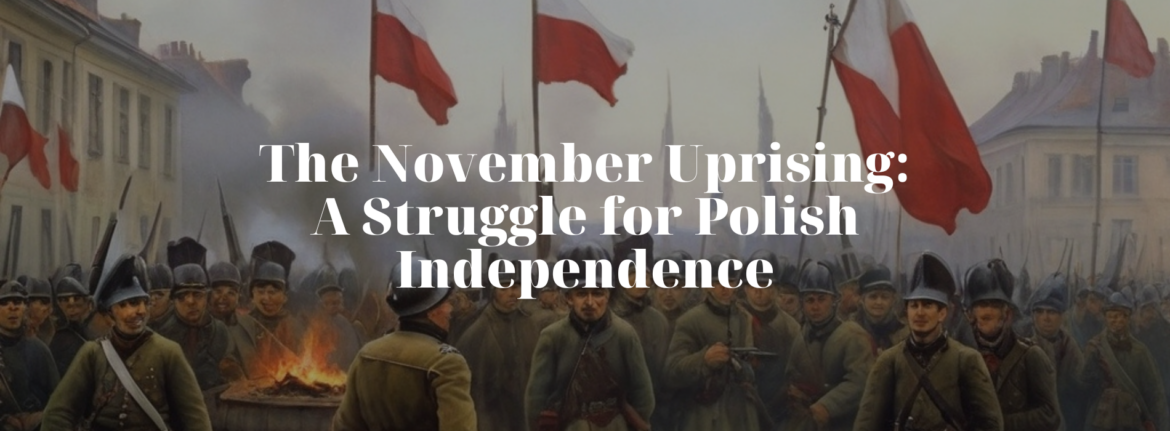Background and Prelude
The November Uprising, known in Polish as „Powstanie Listopadowe,” began on the night of November 29, 1830, and was a significant event in Polish history, marking one of the first major national insurrections in modern Poland. This Uprising was a response to the increasing control and oppression by the Russian Empire, particularly after the Congress of Vienna in 1815, which ended the existence of the Duchy of Warsaw and led to the creation of the Congress Kingdom of Poland under Russian influence. Over time, the autonomy of this Congress Kingdom was progressively undermined, with the Russian authorities ignoring its constitution and replacing Polish officials with Russians.
Outbreak of the Uprising
The immediate trigger for the Uprising was the Russian plan to use the Polish Army to suppress the July Revolution in France and the Belgian Revolution. A group of young cadets from the Warsaw officers’ school, led by Lieutenant Piotr Wysocki, revolted on November 29, 1830, by taking arms from their garrison and attacking the Belweder Palace, the residence of the hated Grand Duke Constantine Pavlovich, the de facto viceroy of Poland. The insurgents succeeded in capturing the Warsaw Arsenal, and with the support of armed civilians, they forced the Russian troops to withdraw from Warsaw.
The Course of the Uprising
The November Uprising saw several significant military engagements. The Polish forces, though outnumbered and less equipped, managed to win a series of battles, including the Battle of Stoczek, the Battle of Grochów, and the Battle of Iganie, showcasing their resilience and tactical prowess. However, despite these victories, the Poles suffered a devastating defeat in the Battle of Ostrołęka, where the Russian army’s superiority eventually overwhelmed the Polish resistance.
Diplomatic Efforts and International Context
The leaders of the Uprising, including President of the National Government Duke Adam Jerzy Czartoryski, made several diplomatic efforts to gain international support. They aimed to establish an anti-Russian coalition and sought the support of Western powers and the Pope. However, these efforts were largely unsuccessful, as Nicholas I of Russia successfully portrayed the conflict as an internal matter of the Russian Empire, with significant help from Austrian diplomacy. Western powers, namely France and the United Kingdom, were reluctant to confront Russia at the time.
Aftermath and Legacy
The Uprising ended on October 21, 1831, with the Polish Army surrendering and a new wave of émigrés fleeing, primarily to France. The aftermath was harsh for Poland: Russian rule was tightened, the Polish Army was disbanded, and higher education institutions were closed. Despite its failure, the November Uprising became a symbol of the Polish struggle for independence and helped to strengthen the Polish national consciousness. The memory of the Uprising and its heroes, like Emilie Plater, a woman who fought valiantly, is honored and remembered in Poland and among the Polish diaspora.
The November Uprising stands as a testament to the enduring spirit of the Polish people in their quest for sovereignty and freedom. Despite the odds and the lack of external support, the Uprising showcased the resilience and patriotism of the Polish nation, setting the stage for future struggles for independence.
